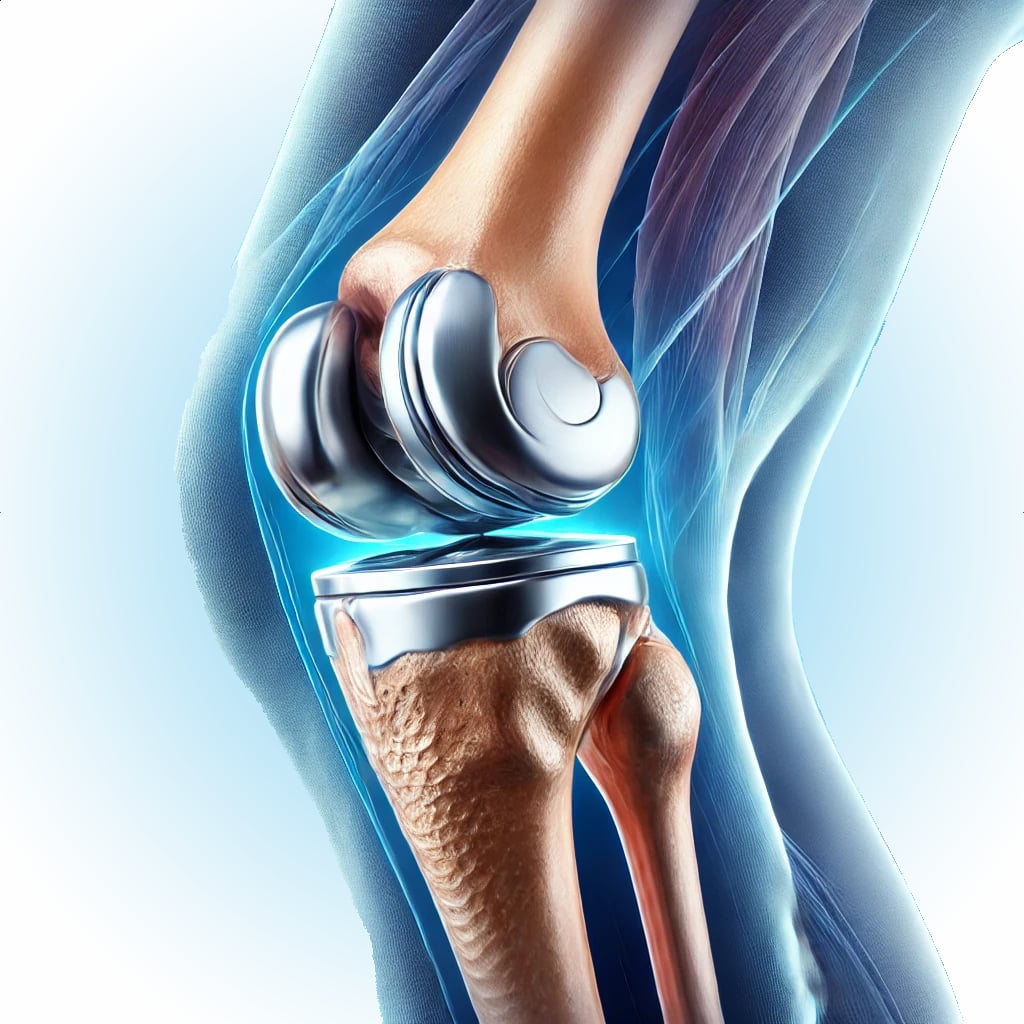Physiotherapy After Total Hip or Knee Replacement
Introduction
This article explores the role of physiotherapy in rehabilitation after total joint replacement (TJR) of weight-bearing joints (knee, hip). It describes the specifics of each postoperative phase and their physiotherapeutic approach, including some recommendations that may improve the effectiveness of the postoperative recovery.
The human body is a brilliantly designed system based on various biological, chemical, and physical principles. If we look at the physical structure of such a system in a simplified way, we see a network of tubes (bones) connected by various types of joints.
We all know that every machine – and sometimes the human body – needs parts replaced over time. While mechanics have it relatively easy with machines, “human” mechanics – orthopedic surgeons – face more complex tasks.
Today, only a few joints in the human body can be replaced. Fortunately, these include the most important ones – the knee and the hip, which are essential for walking. As one of my great teachers used to say, “those who walk, live.”
Osteoarthritis
Structural joint changes that lead to total joint replacement (TJR) are most commonly caused by osteoarthritis. This condition negatively affects all joint components, gradually reducing mobility and stability while increasing pain.
Joint Replacement – Total Joint Arthroplasty (TJR)

TJR is considered in cases of advanced arthritis with severe pain or traumatic injuries when joint preservation is not possible.
Personally, I support early joint replacement – not waiting too long and addressing the issue while the person is still active, muscular, not overweight, and without complications such as cardiovascular issues, type II diabetes, etc.
There is a risk that the prosthesis won’t last “a lifetime” and may need replacing, but the benefits of early surgery are, in my opinion, more significant.
Rehabilitation after early TJR is generally easier. It significantly improves quality of life while the patient is still active and mobile. This reduces the risk of cardiovascular and metabolic diseases that are common later in life.
Physiotherapy after TJR
Physiotherapy is a key part of post-operative rehabilitation. Its importance is comparable to the surgery itself. The goal is to restore lost joint function as quickly as possible.
Basic components of physiotherapy after TJR include:
a) active exercise (kinesiotherapy)
b) manual techniques (scar and soft tissue treatment)
c) increasing joint range of motion
d) education
Rehabilitation after TJR can be divided into two phases:
1) Early Postoperative Phase

This phase occurs in the hospital – from the surgery until discharge. From the patient’s point of view, it can be a very intense period.
Immediately after surgery, there is severe pain and limited mobility. The physiotherapist teaches basic exercises in bed, passively improves joint range of motion, assists the patient to stand, and teaches crutch walking.
2) Subsequent Postoperative Phase
After the early phase, there are three possible options:
1) The patient moves to a rehabilitation ward
2) The patient undergoes spa treatment
3) The patient returns home and continues with outpatient physiotherapy
Ideally, the patient goes directly from the hospital to a rehabilitation facility or spa. If choosing outpatient care, the patient goes home and attends regular physiotherapy sessions.
Which treatment option to choose after surgery?
I have worked with patients in rehab wards, spas, and outpatient settings, and I can’t say which option is best – each has pros and cons.
The key is that the follow-up rehabilitation should begin immediately after the early postoperative phase. If there’s too much delay, recovery may slow, or full joint mobility may not be restored.
Equally important is the quality of the rehabilitation program and physiotherapy care. When choosing a facility, I would focus on the amount of individual physiotherapy offered (the more, the better).
Physiotherapy in the follow-up postoperative phase
Postoperative physiotherapy consists of several key elements:
- manual treatment of the scar and surrounding tissues
- gradual assisted increase of joint mobility (crucial for knee replacements)
- exercises to restore strength and stability of the operated leg
Conclusion
Physiotherapy is an integral part of comprehensive rehabilitation following today’s common total joint replacements. The physiotherapist uses various techniques to help restore joint function quickly.
Before surgery, it’s essential that the patient is well informed about follow-up rehabilitation options, especially regarding continuity and the quality of physiotherapy.
More info about my physiotherapy practice here.
More articles available here.